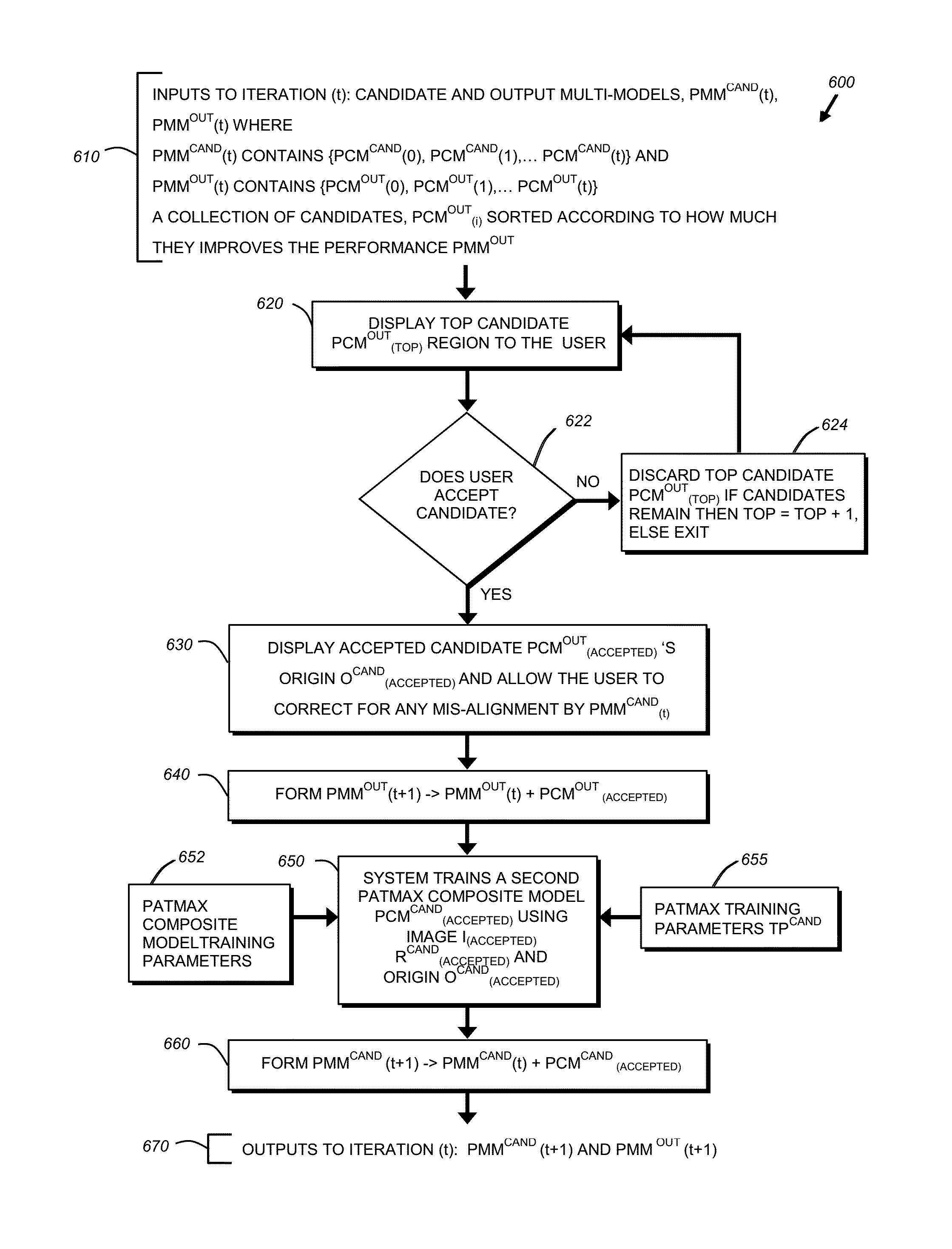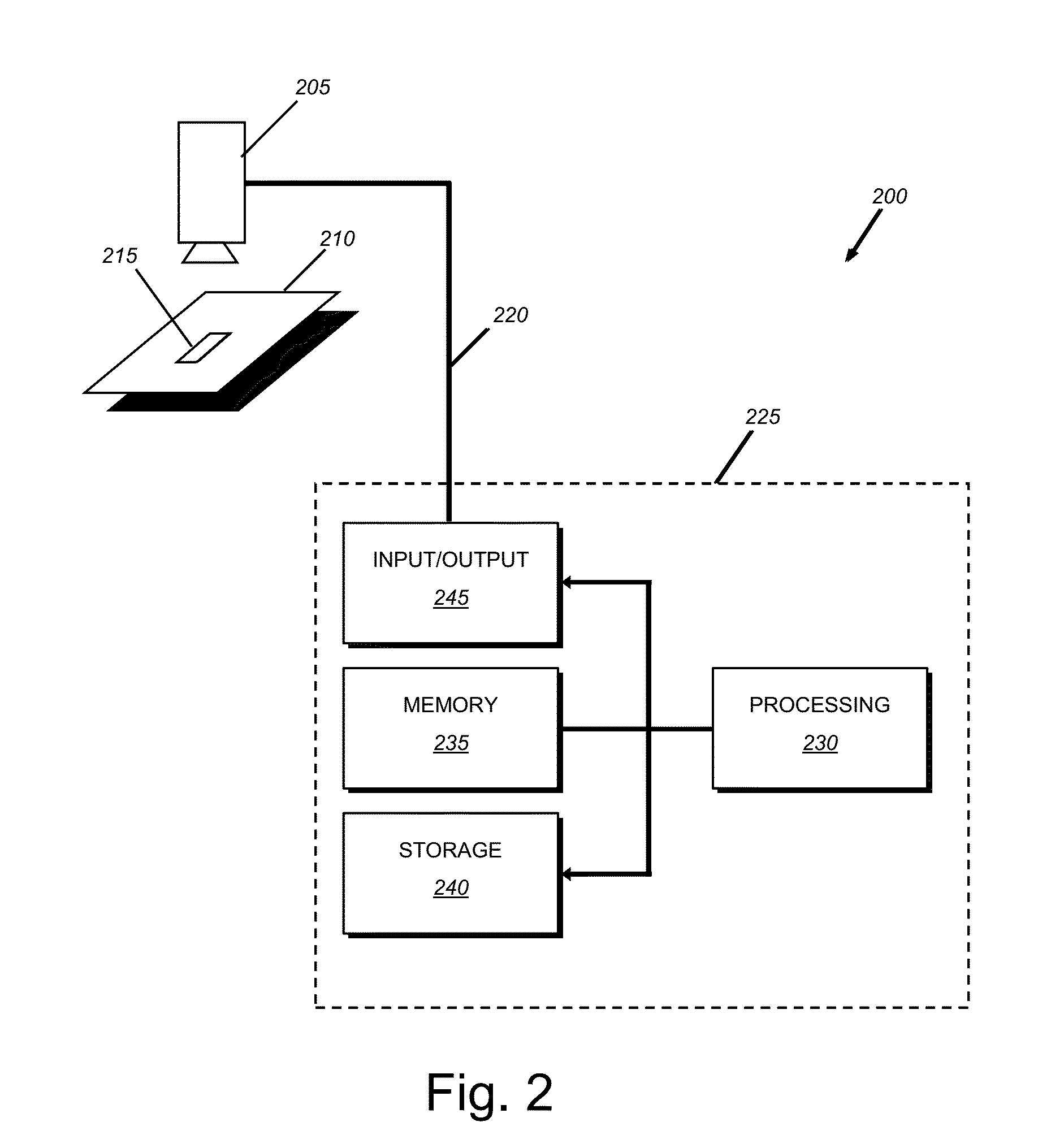Semi-supervised method for training multiple pattern recognition and registration tool models
a pattern recognition and registration tool technology, applied in the field of machine vision, can solve the problems of image noise, high degree of distortion of features on each layer, and many of the aspects of machine vision system training and run-time operation will be more difficult to apply, so as to reduce the amount of front-end processing, improve robustness, and small differences in appearance of target regions
- Summary
- Abstract
- Description
- Claims
- Application Information
AI Technical Summary
Benefits of technology
Problems solved by technology
Method used
Image
Examples
Embodiment Construction
[0016]FIG. 2 is a schematic block diagram of a machine vision system 200 that may be utilized to practice the principles of the present invention in accordance with an illustrative embodiment. The machine vision system 200 includes a capturing device 205 that generates an image of an object 210 having one or more features 215. The capturing device 205 can comprise a conventional video camera or scanner. Such a video camera can be a charge coupled device (CCD) or other system for obtaining appropriate image information, such as the well-known CMOS sensors. Image data (or pixels) generated by the capturing device 205 represents an image intensity, for example, color or brightness of each point in the scene within the resolution of the capturing device 205. The capturing device 205 transmits a digital image data via a communications path 220 to an image analysis system 225. The image analysis system 225 can comprise a conventional digital data processor, such as the vision processing s...
PUM
 Login to View More
Login to View More Abstract
Description
Claims
Application Information
 Login to View More
Login to View More - R&D
- Intellectual Property
- Life Sciences
- Materials
- Tech Scout
- Unparalleled Data Quality
- Higher Quality Content
- 60% Fewer Hallucinations
Browse by: Latest US Patents, China's latest patents, Technical Efficacy Thesaurus, Application Domain, Technology Topic, Popular Technical Reports.
© 2025 PatSnap. All rights reserved.Legal|Privacy policy|Modern Slavery Act Transparency Statement|Sitemap|About US| Contact US: help@patsnap.com



